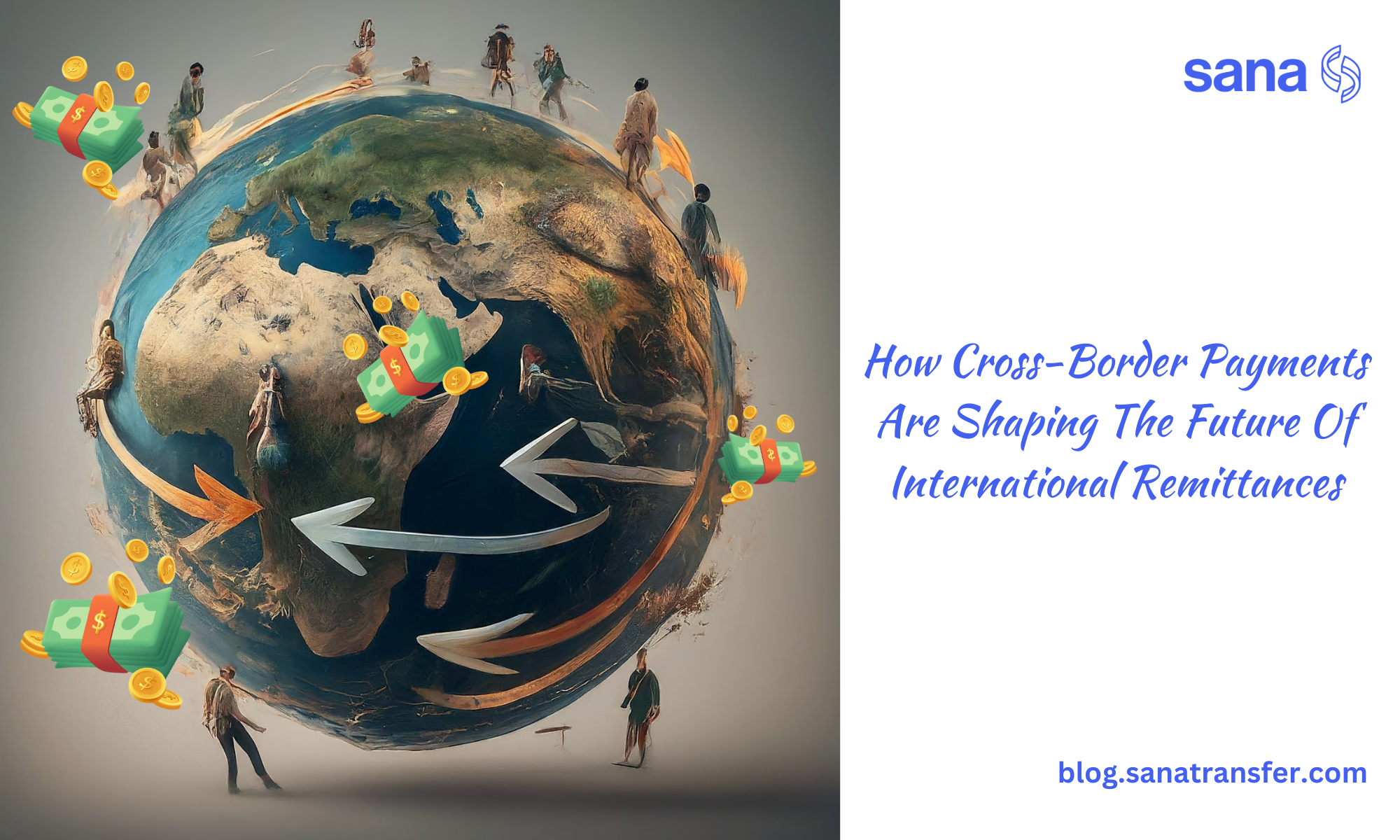How Cross-Border Payments are Shaping the Future of International Remittances

Cross-border payments are financial transactions that take place between individuals or businesses in different countries. They can be for a variety of purposes, such as international trade, foreign direct investment, or personal remittances.
International remittances on the other hand are transfers of money from individuals working abroad to their families and friends back home. They are a vital source of income for many families in developing countries, and they play an important role in poverty reduction and economic development.
The World Bank estimates that global remittances reached $722 billion in 2021, making them the largest source of external financing for developing countries after foreign direct investment. Remittances can be used to pay for essential needs such as food, shelter, healthcare, and education. They can also be used to invest in businesses, which can create jobs and stimulate economic growth.
However, traditional methods of sending remittances can be slow, expensive, and opaque. For example, sending money through a bank can take several days and cost up to 10% of the transfer amount. This can make it difficult for families to receive the money they need, and it can also eat into their limited resources.
New technologies, such as blockchain and mobile payments, are emerging that have the potential to make cross-border payments faster, cheaper, and more transparent. These technologies could make it easier for families to receive remittances, and they could also help to reduce poverty and promote economic development.
The Evolving Landscape of Cross-Border Payments
Cross border payments are becoming faster, cheaper, and more inclusive. Gone are the days of sluggish, opaque, and expensive cross-border payments. The landscape is undergoing a dynamic transformation, fueled by innovative technologies and new players, promising a future of faster, cheaper, and more inclusive money transfer across borders. Some of the reasons are because of:
- Fintech Rising: At the forefront of this revolution stand fintech companies. Leveraging disruptive technologies like blockchain, they have introduced solutions that bypass traditional financial institutions, streamlining processes and slashing costs. Blockchain, with its distributed ledger technology, offers enhanced security, transparency, and traceability, making it ideal for cross-border transactions.
- New Players Emerging: Alongside fintech, we see the rise of money transfer operators (MTOs) and digital wallets. MTOs, like TransferWise, Remitly and SanaTransfer, focus on cost-effective money transfers through partnerships and efficient routing, while digital wallets, like PayPal and Payoneer, provide convenient and secure platforms for international payments. This competition fosters innovation and drives down fees for customers.
- Speeding Up the Flow: The adoption of real-time and faster payment systems is further transforming the scene. Imagine sending money from Paris to Tokyo and having it instantly available! Systems like RippleNet and SWIFT gpi enable such near-instantaneous transfers, eliminating waiting times and improving cash flow for individuals and businesses.
- CBDCs: Entering the Game: Central Bank Digital Currencies (CBDCs), digital versions of national currencies issued by central banks, are also entering the fray. While still in their early stages, they have the potential to revolutionize cross-border payments by offering secure, efficient, and potentially cheaper transactions. Their interoperability across borders could further reduce costs and complexities.
How These Changes are Shaping Remittances
This evolving landscape explained above offers numerous benefits including:
- Faster transactions: Funds reach beneficiaries quicker, improving financial inclusion and access to critical resources.
- Reduced costs: Lower fees and charges mean more money reaches intended recipients, boosting individual and household well-being.
- Increased transparency: Enhanced tracking and visibility of transactions create trust and empower users.
- Financial inclusion: Reaching the unbanked population through mobile wallets and digital solutions broadens financial access.
- Diversification of options: Beyond traditional bank transfers, users have more choices depending on their needs and preferences.
Potential Challenges and Roadblocks of Cross-Border Payments
While the advancements in cross-border payments offer exciting possibilities, several roadblocks persist, threatening to stall progress and hinder full inclusivity. Let's explore some key challenges and potential solutions:
- Regulatory Hurdles and Compliance: Navigating the complex labyrinth of regulations and compliance requirements across different countries can be daunting for new players and fintech companies. Differing Know-Your-Customer (KYC) and Anti-Money Laundering (AML) rules can create delays and increase operational costs.
Solutions to this problem include harmonization of regulations and standardized compliance procedures across jurisdictions can ease navigation. Collaborations between regulators, financial institutions, and fintech companies can create frameworks that balance security with innovation.
- Cybersecurity Threats and Fraud: As with any digital system, cross-border payments are vulnerable to cyberattacks and fraud. Data breaches, hacking, and identity theft can pose significant risks for both users and providers.
Solutions to this hurdle involve investing in robust cybersecurity infrastructure, employing advanced encryption methods, and fostering consumer awareness about online safety are crucial steps. Collaborative efforts to fight cybercrime and share threat intelligence are also essential.
- Ensuring Interoperability and Global Connectivity: Lack of interoperability between different payment systems and fragmented infrastructure can hinder smooth cross-border transactions. Additionally, limited access to internet and digital technology in certain regions creates connectivity gaps.
To make this issue a thing of the past, involved entities should adopt standardized technical protocols and open APIs that can bridge the gap between systems, enabling seamless money transfer. Expanding internet infrastructure and promoting digital literacy in developing countries are vital for broader financial inclusion.
- Digital Divide and Access to Technology: Not everyone has equal access to smartphones, internet connectivity, and digital financial services. This "digital divide" excludes low-income communities and rural populations from the benefits of new payment solutions.
To solve this issue, initiatives aimed at closing the digital divide through affordable internet access, subsidized devices, and financial literacy programs are crucial. Partnering with local community organizations and NGOs can facilitate targeted outreach and adoption.
By addressing these challenges through collaborative efforts, we can pave the way for a future where cross-border payments are truly seamless, secure, and accessible to all. This will not only empower individuals and families but also unlock the full potential of global trade and economic development.
The Future of Cross-Border Payments and Remittances
The Future is bright though as the evolving landscape of cross-border payments holds immense promise for a future where sending money across borders is as easy, fast, and affordable as sending a text message. With continued innovation, collaboration, and regulatory support, this future is closer than ever, fostering global financial inclusion and economic growth for all.
- Innovation at the Forefront: New technologies like blockchain, artificial intelligence, and cloud computing will continue to drive the evolution of cross-border payments. Blockchain's distributed ledger technology offers enhanced security, transparency, and traceability, while AI can streamline processes and combat fraud. Cloud computing enables scalability and facilitates global reach for fintech players.
- Collaboration is Key: Bridging the gap between traditional financial institutions and new entrants like fintech companies is crucial. Collaborations can leverage the strengths of both – the trust and reach of traditional players with the agility and innovation of fintech. Joint ventures, shared infrastructure, and open APIs can accelerate progress and benefit users.
- Policy and Regulation Pave the Way: Supportive policy and regulatory frameworks are essential to harness the potential of innovation while ensuring security and stability. Harmonization of regulations across jurisdictions, streamlined compliance procedures, and clear guidelines for new technologies can foster growth and inclusivity.
A Brighter Future for Remittances
This confluence of innovation, collaboration, and supportive policies paints a promising picture for the future of remittances:
- Reduced Costs: Lower transfer fees and efficient routing will mean more money reaching intended recipients, boosting individual and household well-being.
- Instantaneous Transactions: Real-time and faster payment systems will enable near-instantaneous transfers, improving access to critical resources and financial security.
- Unbanked Population Included: Mobile wallets and digital solutions will reach the unbanked, expanding financial inclusion and empowering marginalized communities.
- Greater Transparency: Enhanced tracking and visibility of transactions will create trust and empower users, promoting financial literacy and responsible money management.
While challenges persist, the momentum is undeniable. By harnessing the power of innovation, fostering collaboration, and creating supportive regulatory environments, we can build a future where cross-border payments and remittances are truly seamless, secure, and accessible to all, unlocking a world of opportunities for individuals, businesses, and economies globally.
Final Words
Cross-border payments, particularly in the form of remittances, hold immense significance for global development. They act as lifelines for families, fueling individual well-being, fostering investment, and driving economic growth in developing nations. The ongoing transformation of this landscape, fueled by disruptive technologies and new players, carries the potential to unlock even greater benefits for individuals and economies alike.
Imagine a future where sending money across borders is as simple as sending a message, where faster transfer speeds and lower fees empower families and fuel economic activity. Picture a world where financial inclusion expands, reaching the unbanked and fostering financial literacy and responsibility. This future is within reach, but challenges remain. Regulatory frameworks need to adapt, cybersecurity concerns must be addressed, and the digital divide bridged. By actively tackling these obstacles and fostering continued innovation and collaboration, we can unlock the full potential of this revolution, shaping a future of seamless, secure, and inclusive cross-border payments that benefit all.
